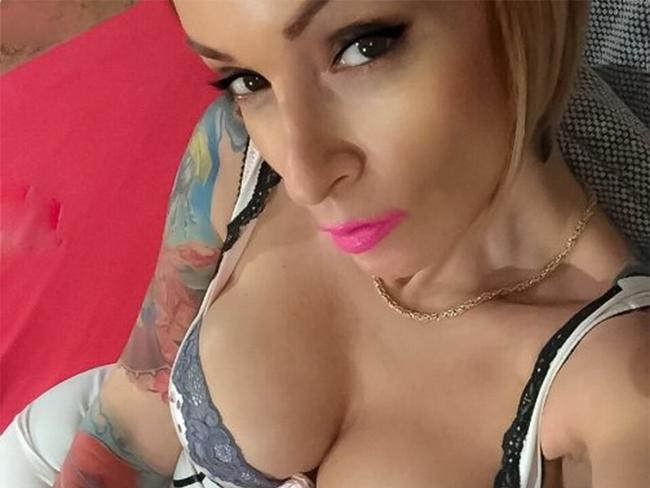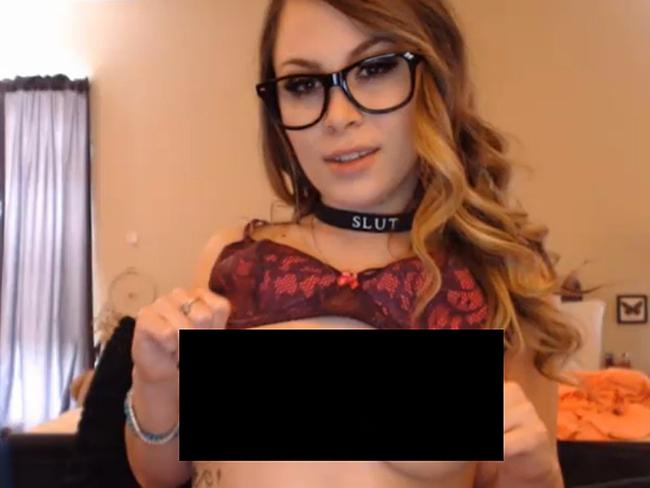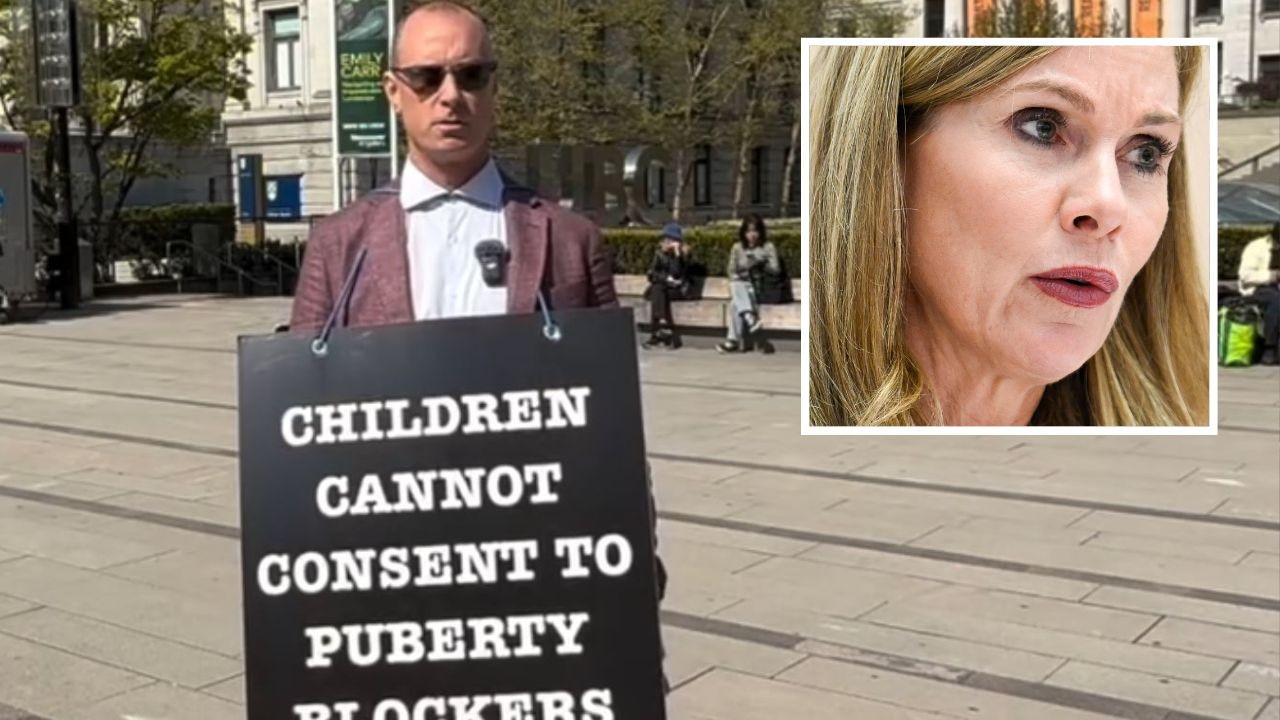Twitter has become a faux porn social media platform, leaving experts concerned for children
TWITTER has become a faux porn site, and experts say it could be teaching kids how to rape, which should make every parent and user concerned.

Social
Don't miss out on the headlines from Social. Followed categories will be added to My News.
EXCLUSIVE
TWITTER has become a faux porn site with hardcore images and video easily accessible.
Cyber experts and childhood psychologists are hugely concerned about the impact it may be having on very young users of the service and say it could even be teaching kids how to rape, sexually abuse others or be putting them in direct contact with paedophiles.
A special investigation by News Corp Australia has uncovered the dark side of social media which should make every parent and user concerned.
The hashtag #NSFW — or Not Safe For Work — is one of the biggest harbourers of X-rated material, including explicit videos and images that are not censored or hidden.
In one case a 15-year-old girl called kids helpline last month and said she had been sending “sexy nude photos” of herself to “at least 20 guys” on Twitter.
The girl felt she was addicted to soft porn images that she had been viewing on the 140-character social media platform.
The men she had been interacting with were sending her back pictures of their own genitalia.

In another case a different 15-year-old girl called Kids Helpline in February to express concern about her 17-year-old boyfriend who she felt was addicted to viewing porn on social media services like Facebook and Twitter and was pressuring her to perform the lewd acts he had seen.
News Corp Australia sighted hundreds of hardcore pornography videos and images on the seemingly innocent #NSFW hashtag during its investigation.
The findings prompted a stern response from the Turnbull government which yesterday slammed Twitter for its questionable content.
“It’s concerning that this type of material can be easily accessed by children on mainstream social media,” Communications Minister Mitch Fifield told News Corp Australia.
“The government is committed to enhancing online safety for children and that’s why we established the office of the Children’s eSafety Commissioner.
“The Commissioner has also established the iParent site, which provides advice on how parents and carers can keep children safe online.
“I welcome any conversation that helps raise awareness of online safety for children.”

While the service, along with other social media platforms like Facebook and Instagram, promotes an age restriction of 13-plus there are thousands of underage users of Twitter.
Figures from the e-safety commissioner show 34 per cent of kids aged 8-13 have circumvented age-restriction requirements to access social media and of that cohort 11 per cent list Twitter as their preferred service.
A total of 82 per cent of teens aged 14-18 were also on social media with an average of three accounts and 23 per cent sighted Twitter as their preferred service.
Matthew Warren, cyber expert at Deakin University, said Twitter had a reputation in the community as being one of the safer forms of social media.
But that perception was an illusion, he said.
“The problem is Twitter doesn’t really police its hashtags so what it means is if children or young people want to focus on particular issues like pornography via these not easily identifiable hashtags, their parents are none the wiser,” Professor Warren said.
He said the dangers on Twitter were immense, including potentially linking children directly to paedophiles via live video on its sister service Periscope.
“Really parents need to be aware that no social media is safe.”

Louise Davis, manager of clinical practice at Kids Helpline, said counsellors were increasingly getting calls from children being exposed to or accessing porn on social media.
She said it had devastating consequences on a child’s development and in some cases were teaching children about rape and sexual abuse.
“We are seeing exposure to this type of material shape unhealthy sexual attitudes in young people and children. It can cause addictions, eating disorders and it can also lead to rape training,” Ms Davis said.
“We’ve seen exposure to pornography play a causal role in child-on-child sexual abuse.”
Ms Davis said the service had seen a significant increase over the past six months in calls about the sexual abuse young people had experienced from their peers as a result of child perpetrators being influenced by sexualised imagery online.
The shocking new trend of kids accessing pornography on social media follows a government response this week to an inquiry into the impact of children viewing pornography online.
E-safety commissioner Julie Inman Grant said parents needed to be vigilant when it came to social media safety.
“Technology tools, in isolation, will not serve as a total panacea,” Ms Inman Grant said.
“There is no substitution for adult engagement and oversight in children’s online lives.”

Matthew Keeley, Director of the National Children’s and Youth Law Centre said major international tech firms like Twitter, Facebook and Google needed to face a similar level of scrutiny as local outlets on explicit content and children.
“These companies have banked on the community accepting that they should not be responsible for material that they are not aware of,” Mr Keeley said.
“Many parents have been made to feel guilty because of the prevailing policy that says that parental education and supervision is the major way in which children’s access to this material should be managed. In a world of almost constant internet access, that policy is clearly failing many children and parents and benefiting mostly are these highly profitable businesses. In my view (businesses like Facebook, Twitter and Google) are the ones that need to be better educated and supervised.”
Twitter did not respond to specific questions on this story despite numerous calls and emails yesterday.

The platform only provided vague general guidance on its policies including the recently launched “safe search” which removes tweets that contain potentially sensitive content and tweets from blocked and muted accounts from search results.
However, results are not removed completely and it simply takes one click to expand the hidden material.
The majority of X-rated images and videos on #NSFW were not hidden when this feature was turned on.
WHAT PARENTS CAN DO
* Talk to you kids regularly about their social media usage and encourage them to be open and honest with you.
* Educate them about privacy settings and enable them on all devices.
* Try not to be punitive with children and young people when talking about internet usage, rather provide a safe, understanding space to discuss what is happening to them.
* Educate yourself about what trends are occurring online and what your kids may be exposed to.
* Keep in regular contact with your child’s school and other spaces they spend their time to know what might be going on for them.
* Report any inappropriate content to social media providers.
LATEST STATS
There were 141 contacts to Kids Helpline between October 2016 and March 2017 where exposure to online pornography was discussed — this includes clients who had actively sought out pornography, and were being sent or shown pornographic images or videos.
Of those contacts 59 per cent were from males and 41 per cent females.
A total of 47 per cent of contacts were aged between 14-17.
Source: Kids Helpline
Originally published as Twitter has become a faux porn social media platform, leaving experts concerned for children


